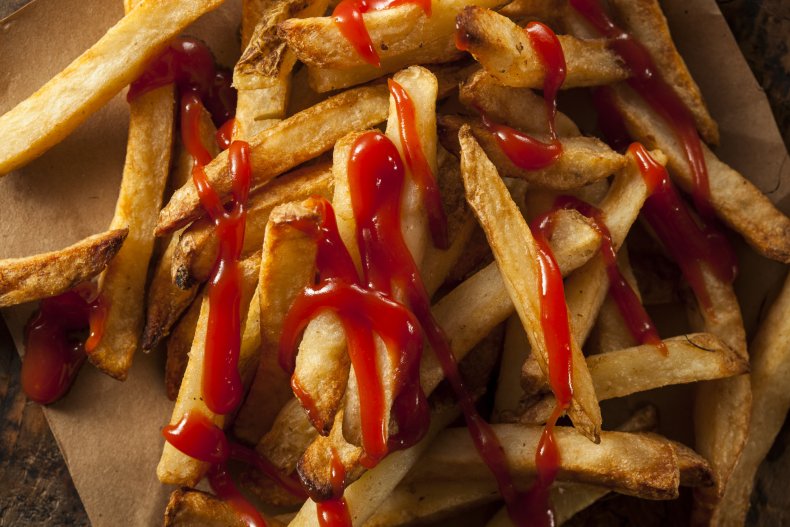[ad_1]
A person has been recreating historical Roman recipes utilizing a 4th century cookbook, together with one which compares to modern-day “French fries and ketchup.”
Andrew Coletti, a meals historian, delves into the cuisines of long-forgotten cultures and brings them to life in his kitchen, then shares the outcomes to his TikTok web page @passtheflamingo.
Coletti, from the U.S., has whipped up medieval and Victorina dishes in addition to recipes from 13th century Egypt, eleventh century Persia, 14th century Spain, fifteenth century Turkey, twelfth century Morocco and historical Greece.
However it’s his foray into the Roman empire which has attracted probably the most consideration on social media, as he created a banquet of dishes from a cookbook generally known as Apicius.
The outcome most likely appears very acquainted, as Coletti defined it is the traditional model of French fries with ketchup, albeit with a twist.
He captioned the clip, which may be seen here: “Historic recipe: parsnip fries with wine sauce, Rome, 4th century AD.) It reveals an appetizing plate not too dissimilar to what you possibly can order in any restaurant right this moment.”
Coletti shared the recipe, saying: “Historical roman fries. The Romans did not have potatoes, that are native to the Americas, however this recipe, from the 4th century cookbook Apicius, bears a putting similarity to French fries and ketchup.”
He joked: “Apicius says to fry parsnips in olive oil. I used my extraordinarily genuine 4th-century air fryer, and high them with a candy, salty, savory sauce referred to as oenogarum.”
Whereas it could sound like an uncommon mixture, Coletti continued: “This was a normal condiment used with many recipes, and the identify comes from a mix of the Greek phrases for the 2 principal elements. Wine, and fish sauce.”
Revealing precisely find out how to make it, he stated: “To make it, you scale back wine over the range and add fish sauce and two spices: black pepper and lovage, which has a taste and scent much like celery. A starch slurry is used to thicken the sauce, I used cornstarch however the Romans used extracted starch from wheat.
“At this level Apicius says that honey is elective, however I believe it actually takes it to the following stage. That is most likely my favourite historical Roman recipe ever. It matches proper right into a banquet of different Apicius recipes. But it would also fit it at a modern table.”
And so they had different related dishes that would not be misplaced on a contemporary menu, as Coletti added: “The Romans did devour floor meat patties and upper-class Romans ate flavored shaved ice as a delicacy, so in case you’re seeking to begin a restaurant, how about an historical Roman diner, full with burgers, shakes and historical Roman fries.”
The clip, shared in August, amassed a couple of million views, whereas one other recipe, for a poppy seed cheesecake from the 4th century, was additionally seen greater than 1,000,000 instances.
Different recipes from the identical period included oyster patina, cucumber salad and oyster sauce, as Coletti defined: “The Romans beloved oysters a lot that they invented not solely this particular sauce for them, but additionally a particular sort of bread for them.”
Commenting on the traditional fries, Dirtycommie420 wrote: “It is loopy how related but completely different meals is from the previous and now. Meals actually does deliver folks collectively.”
“Potatoes and tomatoes are so very important, I am unable to imagine they did not find out about them,” Ashley Hazlehurst lamented.
Vincent Perrier joked: “As a Canadian, I am unable to not see this as a 400AD poutine.”
Newsweek reached out to Andrew for remark.

bhofack2/Getty Pictures
[ad_2]
Source link







